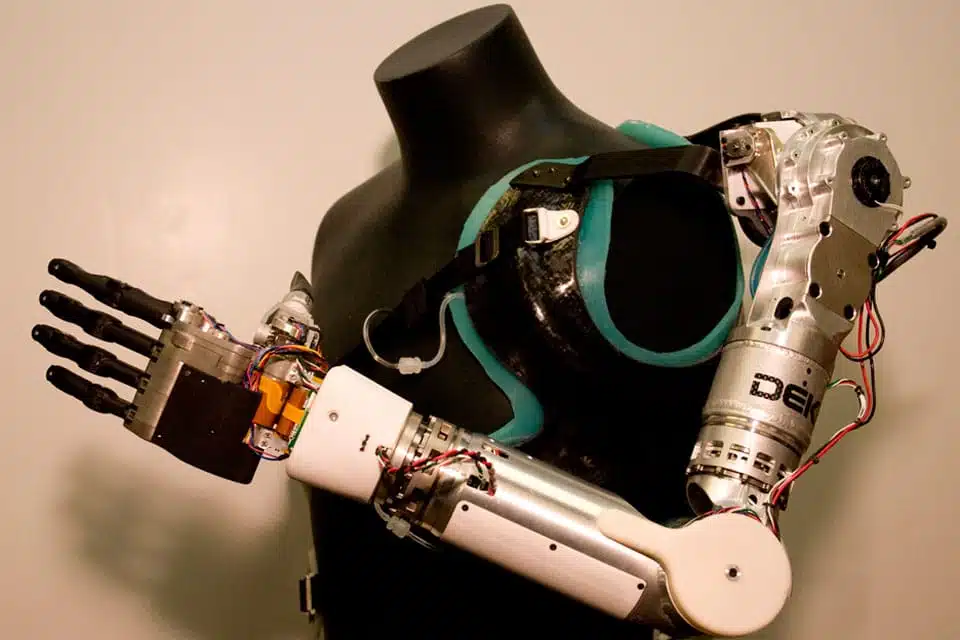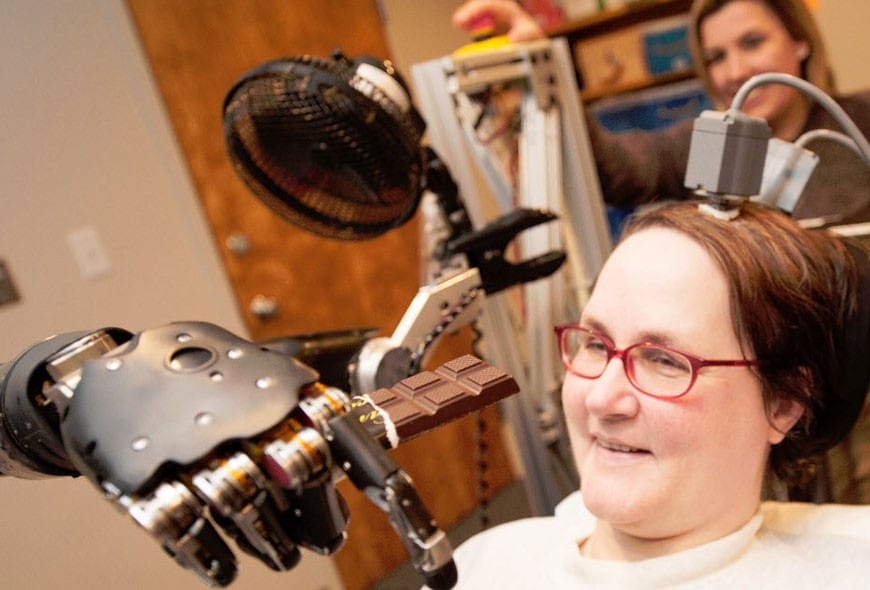Robotics Bring New Hope to Quadriplegics
The University of Pittsburgh Medical Center has come up with a way to help quadriplegic men and women gain the ability to move objects with their minds through robotics. Quadriplegia is a paralysis caused by damage to the spinal cord that results in partial or total loss of use of the limbs and torso. Some cases are caused by accidents and some are genetic. Up until now, Millennial quadriplegics have been forced to rely on care from family members and caretakers because they are unable to move on their own and are confined to wheelchairs. To address this disability, UPMC has been working on a study to help quadriplegic people gain the ability to move objects using a combination of their mind and robotics.
Tim Hemmes damaged his spinal cord due to a motorcycle accident. For seven years he had been paralyzed. He became a participant in UPMC’s study and underwent surgery in which two electrodes were placed into his brain. The electrodes were then hooked up to the robotic arm, giving Tim the ability to move the arm up and down, left to right, forward and back by commands through his brain. With practice and research Tim was able to control the arm to give his wife a high five, something he had not been able to do since his accident.
Robotics are changing lives
Shortly after, Jan Scheuermann was informed about the video that showed Tim Hemmes moving the robotic arm and called the number right away to volunteer for the study. After testing, she was approved for the research and underwent the same brain surgery and was connected to a robotic arm that she named Hector. At the lab, she would train a computer to decode her thoughts into instructions for Hector. Over several months, not only did Jan learn how to move her arm in the three ways that Tim learned, but she was also able to pinch, grasp, and release Hector’s fingers. Her biggest desire was to be able to feed herself a chocolate bar and when she did, she was ecstatic. Image credit: University of Pittsburgh/UPMC
The UPMC is continually working to make it possible for Tim and Jan and other quadriplegics to take the robotic arm home to assist them in their daily lives. As advancements are made in technology and science, there is hope that Tim and Jan will become independent again someday by combining their thoughts with artificial intelligence. Each day scientists are getting closer to making this a reality.









